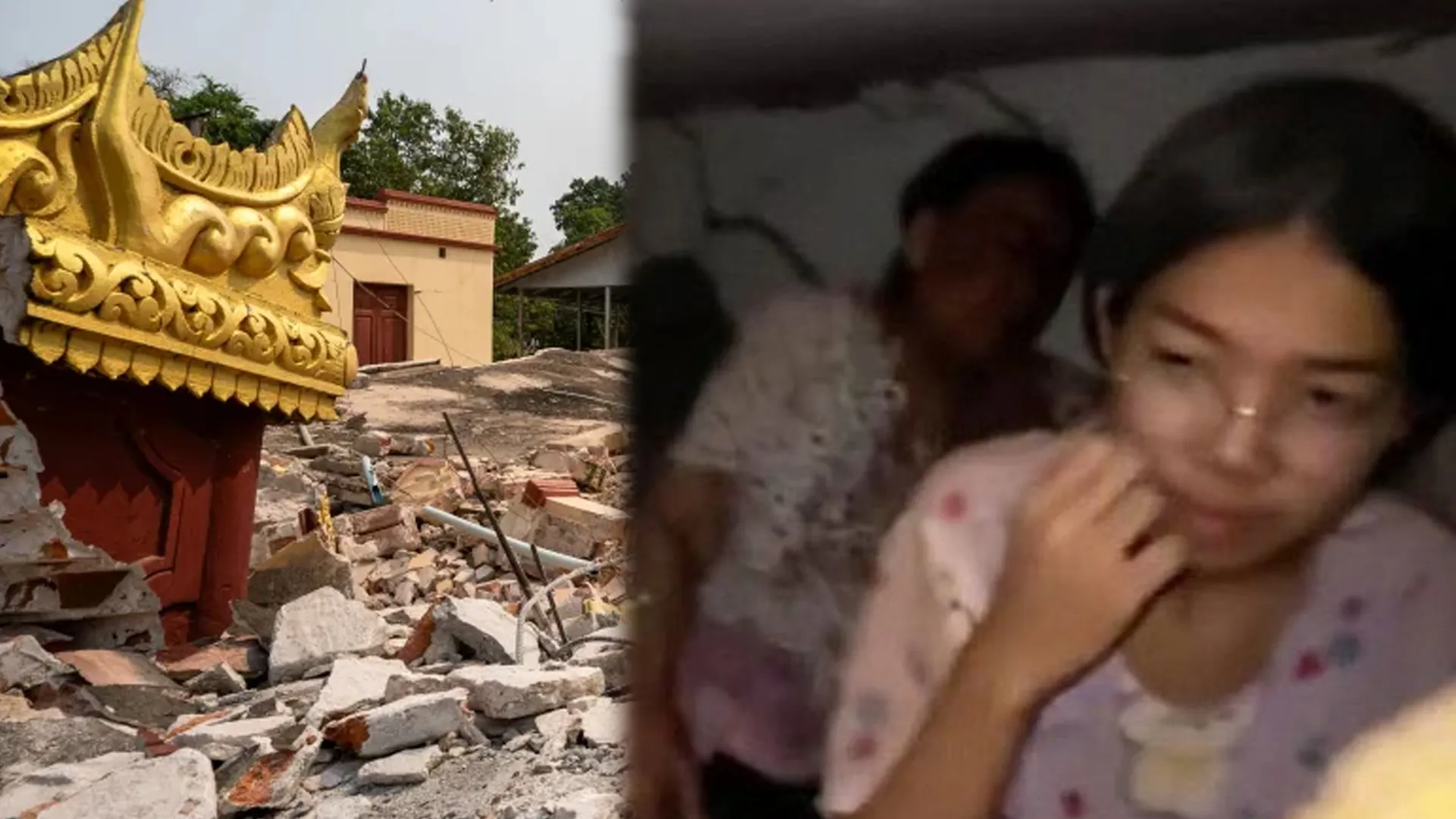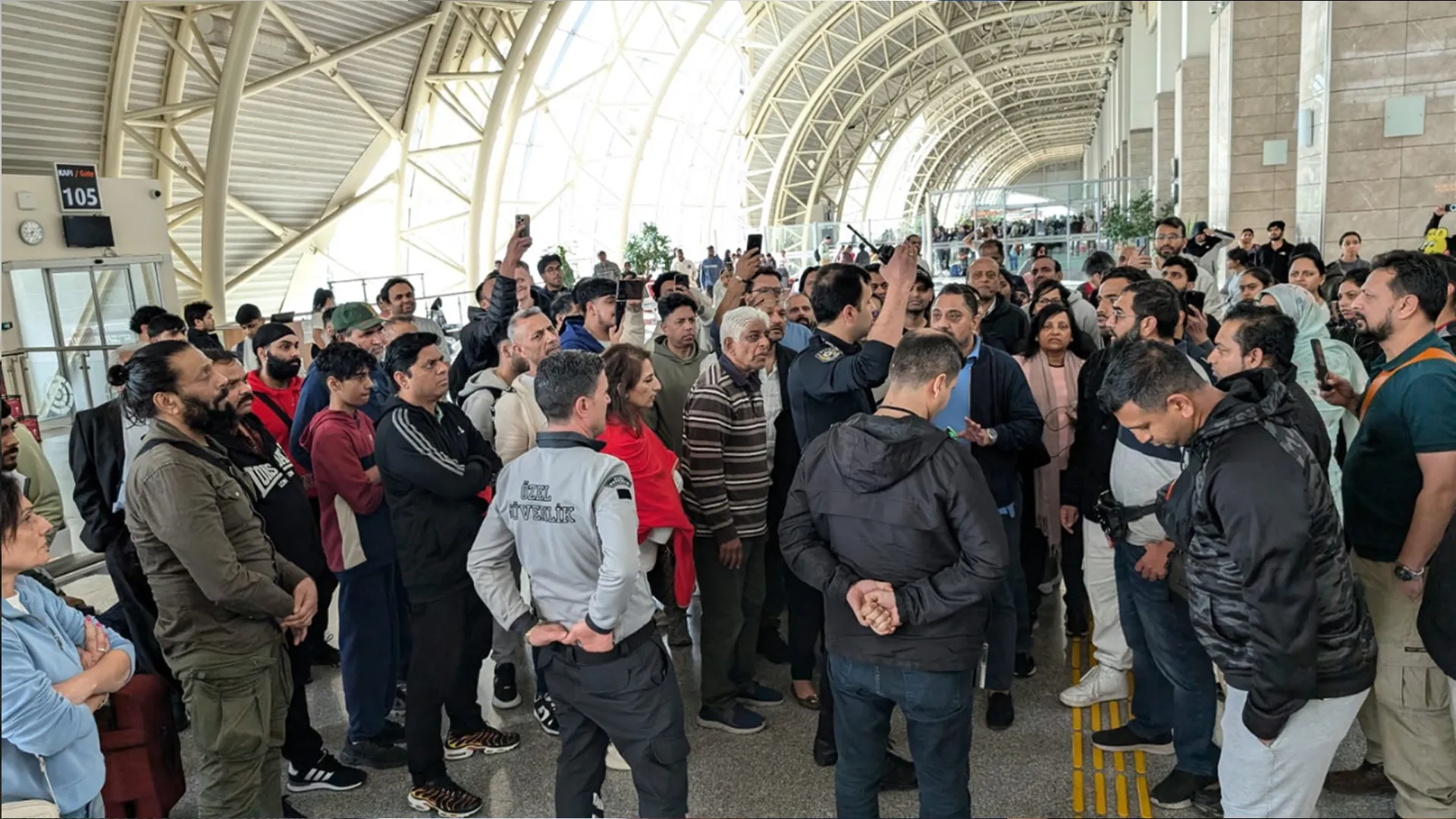A catastrophic earthquake in Myanmar has killed more than 2,000 people, with rescue efforts ongoing amidst the wreckage. The strong quake, which hit the Southeast Asian country on Friday, has left whole communities in shambles, with rescuers, sniffer dogs, and paramedics rushing to find survivors buried under the debris. Yet, with every passing hour, hopes of survival are dwindling as the golden rescue window narrows.
Survivors Start to Surface from the Rubble
Amid the devastation, survival stories are starting to emerge, providing a ray of hope amidst unprecedented destruction. A video shared on social media captures an elderly woman and her two teenage granddaughters pinned inside a small air pocket under the wreckage of their house. The girls, using a butter knife, pounded the concrete in a desperate attempt to get the attention of rescuers. The group was rescued after being stuck for a traumatic 15 hours.
Two women were similarly stranded for five horrifying hours under the wreckage of a hotel building that had collapsed in Mandalay. In an interview with CNN, the women recounted their frightening ordeal. “We were trapped in total darkness, but the good thing is we had a phone and we could use its light to see. If we didn’t have that, we could have died. We could see to clear rubble from on top of each other,” one of the women explained. Another woman said, “While being trapped, we learned that nothing is permanent, and the most important thing to do before death is to live a happy life and to do many good deeds. Don’t do bad things, because karma will follow you.”
Devastating Losses Amid Miracles of Survival
Though the earthquake triggered instances of miraculous rescues, it unleashed tremendous destruction across Myanmar. Very sadly, more than 200 Buddhist monks were murdered when a monastery toppled, and a preschool classroom collapsed, killing 50 children. Further, at least 700 Muslims were reported to have died when mosques collapsed during prayers for Ramadan.
Forgotten Need for Relief in the Wake
As rescue efforts continue, aid organizations are moving into the worst-affected parts of Myanmar to deliver critical relief, such as food, water, and shelter for survivors. The humanitarian disaster has been complicated by the long-running civil conflict in Myanmar, which has been making it increasingly hard for relief to reach its intended recipients. The Myanmar junta’s tight grip on communication networks, coupled with destruction to infrastructure like bridges and roads, has made relief efforts even more difficult.
The United Nations said that in the worst-affected areas, communities are finding it difficult to fulfill their minimum needs. “In the hardest-hit areas …communities struggle to meet their basic needs, such as access to clean water and sanitation, while emergency teams work tirelessly to locate survivors and provide life-saving aid,” a UN agency said in a statement.
The International Rescue Committee (IRC) emphasized the necessity of shelter, food, water, and medicine in such locations as Mandalay, which is close to the epicenter of the earthquake. “Having lived through the terror of the earthquake, people now fear aftershocks and are sleeping outside on roads or in open fields,” said an IRC staffer in Mandalay. “There is a critical need for tents since even those who have houses intact are too afraid to sleep in them.”
Magnitude of the Quake
The earthquake, which struck at lunchtime on Friday, was the most powerful to hit Myanmar in more than a century. The 7.7 magnitude quake has caused widespread destruction, toppling both ancient pagodas and modern buildings alike. As rescue teams continue to search through the debris, the death toll has risen to at least 2,065, with more than 3,900 people reported injured and at least 270 still missing.
A Nation in Crisis
Myanmar is now dealing with a mammoth task following the deadliest earthquake in the country’s history. Aid officials and volunteers still pour into the stricken districts, but the extent of damage and the problem of reaching disaster victims indicate how bad the situation is. Despite all efforts aimed at locating the survivors, the country remains weeping over its immense losses amid the still-evolving tragedy.







